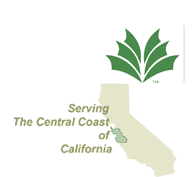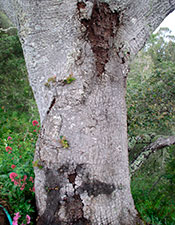Clearwing Moth
 A common pest of coast live oak trees is the clearwing moth. There are over 100 different species throughout the United States. Host trees include alder, ash, aspen, birch, cottonwood, Douglas fir, oak, olive, pine, poplar, stone fruit trees, sycamore, and willow. (UC IPM 2004)
A common pest of coast live oak trees is the clearwing moth. There are over 100 different species throughout the United States. Host trees include alder, ash, aspen, birch, cottonwood, Douglas fir, oak, olive, pine, poplar, stone fruit trees, sycamore, and willow. (UC IPM 2004)
The clearwing moth is from the family sesidae and has many common names. Sycamore borer, Western poplar clearwing, Sequoia pitch moth, Ash borer, Douglas fir pitch moth, and Peachtree borer are the names of some of our local boring insects.
 Sycamore borer (Synanthedon resplendens) larvae feed beneath the bark. They bore through the bark and produce galleries which sometimes destroy the plant’s food and water conducting tissue. They pupate near the bark surface and emerge as adults in late spring to early summer.
Sycamore borer (Synanthedon resplendens) larvae feed beneath the bark. They bore through the bark and produce galleries which sometimes destroy the plant’s food and water conducting tissue. They pupate near the bark surface and emerge as adults in late spring to early summer.
“Most mature trees can tolerate feeding by a few borers. When populations are high, feeding by larvae of certain species causes girdling and dieback of plant parts so that limbs may drop and entire plants may die. The presence of clearwing moths often indicate that trees lack appropriate cultural care or have otherwise been injured.” (UC IPM 2004)
Heavily colonized trees have a distinct bark checking appearance and may need immediate care.
IPM management consists of monitoring for boring frass and other pest activity, trunk drench treatments using an appropriate insecticide if/when necessary, and growing environment assessment and modification for stress reduction.
Non chemical method of control is physical probing of tunnels with a small wire to puncture and kill larvae or spraying appropriate species of nematodes into tunnel openings.
Chemical control uses trunk drench applications of a persistent pesticide to the infested bark areas.


